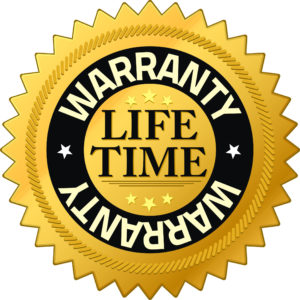The following article's author, Alan Halcon, published it on February 28, 2011. We are re-posting it with his permission. You may also visit his website: Dirttime.com for other great articles by Alan & his colleagues. Click Here for the original.
The hypnotizing affect of a campfire can be relaxing and comforting, but it can also be dangerous. Many accidents seem to occur around the campfire, be it a scalding burn from hot liquids or a burn from the hot coals or flames. Like any injury, a burn can turn an otherwise fun outing into an emergency event. Consider, also, the inability to get to an emergency care facility due to one being in a remote area.
Burns are classified in four categories, first, second, third, and fourth degree burns. It is important to recognize each one so that proper medical care can be administerd.
First Degree Burn
A first degree burn involves only the epidermis and includes redness and swelling of the skin. A sun burn is a good example of a first degree burn. However, sometimes, what appears to be a first degree burn may actually turn out to be more and becomes apparent after twelve to twenty-four hours. If blisters start to form, more advanced treatment will be necessary, because the potential for infection and scarring.
- Begin by cooling the area with cool water for about 10 minutes.
- a topical medication containing Aloe is usually all that is needed.
- Pain medication may be needed for pain control.
Aloe has antimicrobial properties and is an effective painkiller. An alternative to aloe, when none is present, is prickly pear cactus. It contains the same analgesic effect as that of aloe.
Second Degree Burns
Second degree burns involve burning of the first layer of skin (epidermis) and second layer of skin (dermis) being burned. Blisters develop and the skin takes on an intensely reddened, splotchy appearance. Second-degree burns produce severe pain and swelling. Second degree burns present a unique problem to the remote area adventurer. The fluid within the blisters provide a rich environment for bacteria and a resulting infection can occur. Typically, medical help would be sought, but in this situation, one may have to rely on their own abilities.
- Immediately cool the area with water. For large areas, a wet sheet or cloth should be used
- Small blisters should be left intact as a biological dressing. If the small blisters are part of a large burn area, debridement should be considered.
- Large blisters should be debrided, but first clean the burn area with soap and water. After debridement, apply a topical burn agent and light dressing
- To avoid infection, clean the wound once daily and reapply the topical burn agent followed by dressing. Some environments may require more daily changes
- Take over the counter pain medication
- observe the victim for shock
Some doctors advocate not changing the dressing daily; however, being in the outdoors puts the wound at risk of infection and therefore needs to be managed and supervised differently.
- The dressing should cover the entire area. No part of the burned area should be exposed.
- The burn wound should remain moist.
- The dressing should be light and not limit the victims ability to flex.
- frequent flexing prevents the burned skin from tightening and assists with pain control and prevention of edema
Third and Fourth degree burns
There is little one can do for these extreme types of burns without medical help.
- first cool the skin with water. For large areas, a wet sheet or cloth should be used
- If the area is large, it is extremely critical one be protective against hypothermia. The fact the protective layer of skin protecting against the environment has been burned, puts the victim at severe risk of hypothermia.
- Get immediate medical attention.
- observe the victim for shock
Do NOT
Under any circumstances do not use butters, oils, or ice as a means to help soothe the burn– Using ice can further damage tissue.
Conclusion
As always, this is not the be all end all in burn management. There are myriad products available for burns such as Telfa and Adaptic. other Dressings such as hydrogels, silver-coated dressings, silicone gel sheets, etc are also available. This is basic burn aid information for those with limited resources.
By Alan Halcon, on December 30th, 2010







No comments yet.